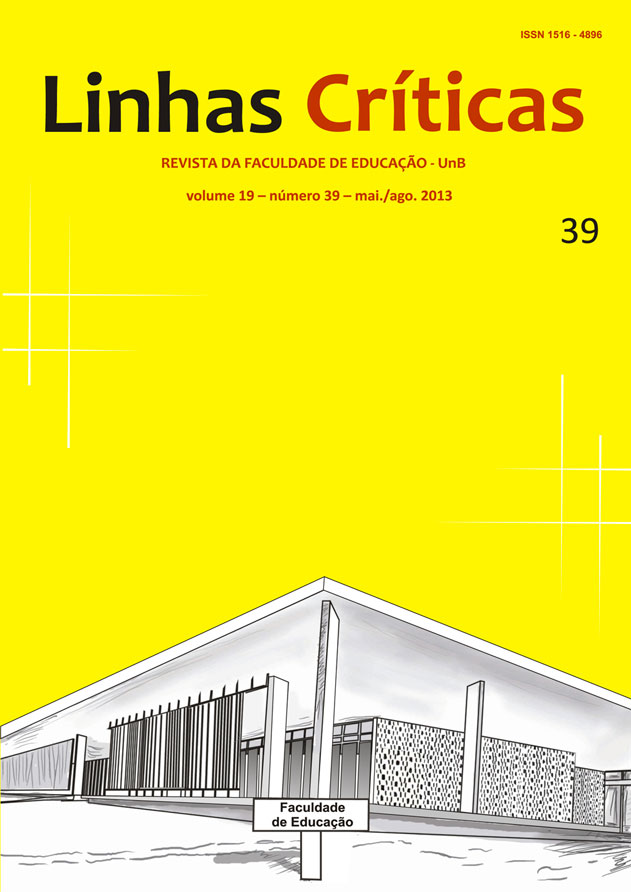Using Google Earth in mathematics classes
DOI:
https://doi.org/10.26512/lc.v19i39.4145Keywords:
Remote sensing, Google Earth, Geometry, Primary schoolAbstract
In this article we reflect on the use of remote sensing as a teaching strategy in mathematics classes, more specifically geometry. We devised and implemented several activities centered on remote sensing, using Google Earth tools. The fieldwork was conducted with a ninth grade class from a private school in Rio de Janeiro, and their sense of space was the outcome analyzed. The results shed light on aspects of learning acquired from the conjoined study of four topics: the distance between two points, time and distance, and geographical representation and comparison. The type of activity was important for the students to conjoin these subjects and make discoveries. The leaning dynamics was favorable to the creation of an environment that encouraged children to learn.
Downloads
References
BAIRRAL, Marcelo A. O desenvolvimento do pensamento geométrico na Educação Infantil: Algumas perspectivas conceituais e curriculares. In Mercedes Carvalho & Marcelo A. Bairral (Eds.), Matemática e Educação Infantil. Petrópolis: Vozes, 2012 (prelo).
BUZATO, Marcelo E. K. Inclusão digital como invenção do quotidiano: um estudo de caso. Revista Brasileira de Educação, v. 13, n. 38, p. 325-342, 2008.
MAIA, Rafael C. O.; BAIRRAL, Marcelo. A. Uma ferramenta virtual para a matemática no ensino fundamental. Pátio Ensino Fundamental, n. 60, 2011, p. 22-25.
MAIA, Rafael C. O. O Google Earth no Cotidiano da Matemática: Atividades com Google Earth para o Ensino Fundamental, 2011. Monografia (Graduação em Matemática) ”“ Instituto de Ciências Exatas, Universidade Federal Rural do Rio de Janeiro, Rio de Janeiro, 2011.
MENEGHETTI, Renata Cristina G. Experimentoteca de Matemática: discussões sobre possibilidades de sua utilização no processo de o ensino e a aprendizagem de Matemática. Práxis Educativa, 6(1), 2011, 121-132.
PANORKOU, Nicole; PRATT, Dave. Using Google sketchup to research children’s experience of dimension. Anais... PME35, Ankara, v. 3, p. 337-344, 2011.
PITTALIS, Marios; CHRISTOU, Constantinos. Types of reasoning in 3D geometry thinking and their relation with spatial ability. Educational Studies in Mathematics, 75(2), p. 191-212, 2010.
SANTOS, Vania Maria N. Escola, Cidadania e Novas Tecnologias: O sensoriamento no ensino. São Paulo: Paulinas, 2002.
VALENTE, Jose Armando; PAZINI, Dulce Léia G. O uso do Sistema de Informação Geográfica e do Sensoriamento Remoto em sala de aula: questões teóricas e práticas. Ciências Humanas e Sociais em Revista, v. 32, n. 1, p. 59-74, 2010.
RICHARD, Philippe. La interaccíón con applets Java para El aprendizaje de las matemáticas. Uno, n. 58, p. 8-24, 2011.
Downloads
Published
How to Cite
Issue
Section
License
Copyright (c) 2016 Linhas Críticas

This work is licensed under a Creative Commons Attribution 4.0 International License.
Authors who publish in this journal agree to the following terms:
-Authors maintains the copyright and grants the journal the right of first publication, the work being simultaneously licensed under the Creative Commons Attribution License which allows the sharing of the work with recognition of the authorship of the work and initial publication in this journal.
- Authors are authorized to enter into additional contracts separately, for non-exclusive distribution of the version of the work published in this journal (eg publish in institutional repository or as a book chapter), with acknowledgment of authorship and initial publication in this journal.
-Authorers are allowed and encouraged to publish and distribute their work online (eg in institutional repositories or on their personal page) at any point before or during the editorial process, as this can generate productive changes as well as increase the impact and the citation of published work (See The Effect of Free Access).



